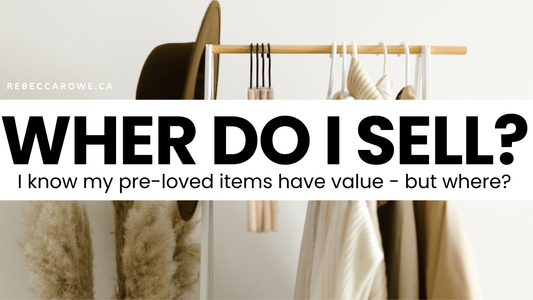Reframing your emotions towards your closet
Putting on clothes is a habit we all have that you’ve never been taught to do. It’s also something that has never really come up in the forty million books I’ve read on motivation, the brain, habit-forming, identity, etc. Style becomes this overlooked tool that’s responsible for both your self-confidence and self-doubt.
Our closets can house some of our favourite pieces but they can be placed in our homes that have the ability to control the way we feel about ourselves in a negative way. If you feel overwhelmed, unmotivated, stressed, or continuously say “Who am I dressing up for?” This post is for you. If you have no idea what I’m talking about skip to the next one.
If you’re feeling Overwhelmed:
What’s happening: Decision fatigue.
Decision fatigue is the idea that after making many decisions the person’s ability to make additional new decisions becomes more challenging. Real Talk, you’re asking your brain to make too many choices. Adults on average make +35k decisions a day with 40-95% of those decisions being made habitually (which leg do you put in your pant first or do you turn on a light when you walk into a dark room.). In times where you’ve been forced to make big changes, such as a new routine, move, pandemic, a closet full of so many choices can cause you to feel fatigued or overwhelmed.
Reason: Too many choices.
There is nothing wrong with loving clothes and style. But when it’s starting to affect your mental health limiting the amount that’s in constant view can help you feel more relaxed.
Action: Remove seasonal, sentimental pieces, pieces that are beyond repair.
Removing does not mean letting go. Storing your off-season clothes in suitcases that aren’t being used, or moving sentimental pieces to another location will free up space in your wardrobe for what you wear every day. Clothing items that are beyond repair or that still have their tags on probably don’t belong in your everyday wardrobe.
Result: Less choice, streamlined thinking resulting in a sense of calmness.
Thought: over-thinking. “What do I wear?” Instead of “What do I want to wear? What needs do I have”
New Thought: “I’m so lucky to have so much choice. What does my day look like? What clothes will best meet the actions for the day?”
If you’re feeling Unmotivated:
What’s happening: Feeling down on yourself, in a rut.
You end up in a rut because either your routine changed. What was once exciting (the novelty of working from your bed and staying in pajamas) has now lost its excitement and has become a habit, an unconscious action. You stop getting the reward of doing something new and you get bored of the new routine because of the results that routinely lead to. Actively changing a bad habit is challenging because outwardly it seems like work and everything about humans has been designed for the path of least resistance.
Reason: You’ve adopted a new routine and pattern of negative self-talk.
Your routine is looked on as being in a rut which is perceived as laziness, which results in negative self-talk. You start talking to yourself saying things like, “I’m such a mess.” or “I can’t believe I let myself go.” Which actually continues the habit. The first thing you need to do to break a new habit is to be aware of it.
Action: Break the cycle by actively creating new processes and habits.
To break a bad habit know the good habit you want and focus on those results. What was the REASON you want to change? If it’s not a good reason you won’t do it. Make the bad habit hard to do. In this case, put your comfort clothes at the back of your closet or under the pieces you want to wear. Set yourself up for success (make it easy) by preparing your outfit the night before. Lose the all-or-nothing attitude. Your life is a constant practice and if you lose motivation one day acknowledge it but move on and get it back the next day.
Result: (over time) you retrain your brain to think positively about the situation and yourself.
Training your brain is hard work and requires regular training the same as your biceps. When you’re feeling unmotivated and you find yourself speaking negatively about yourself to yourself you’re creating stress. A positive self-talk routine and habit can reduce your overall stress and help you break those bad habits that got you into your rut.
Thought: “ugh, this is so hard. What’s the point?”
New Thought: “I can do hard things. It’s okay that this is hard right now.”
If you are feeling Stressed:
What’s Happening: Stress is the body’s response to a perceived threat. Our stress response is based on memory and not a realistic probability. (And memories can be manufactured if you think the same thing over and over again.) You’re visualizing a negative outcome. This could be because you’ve had negative or traumatic occurrences when you’ve made an effort to dress up in the past. You may be faced with current negative scenarios when you take that time to dress for yourself. All of this works together to create your body’s reaction.
Reason: You’ve had people comment on your appearance or feel that people are going to comment which is causing your body to panic.
Your body does a fantastic job at protecting you and it wants to protect you. It’s telling you that your closet leads to you feeling good about yourself which is causing a negative reaction somewhere else in your life. This could be in the shape of a partner not being supportive or asking questions like, “who are you dressing up for?” “Why are you being so vain?” Which is causing you to go into protection mode. It could also be in response to a perceived fear for which you don’t have any concrete memory to pull on but instead are considering what the collective “people” may think.
Action: Pull out the pieces in your closet that you’ve been complimented on before. Use these pieces as the backbone of your wardrobe and ensure that you’re taking into account the utility of your daily outfit choice. You’ll feel comfortable knowing that you’re dressed for the task that you have planned for the day. You can also choose to wear logos that make you feel like part of a team.
Identifying the perceived threats you’re imagining is the first step in overcoming the stress you’re feeling towards your wardrobe. Are you nervous about what people will say? How you’ll appear to your friends or coworkers? Consider the worst-case scenario and ask if you could handle that? Start small. Maybe one day you choose to wear a dress instead of pants. Over time you’ll get more confident in your wardrobe choices and feel more comfortable exploring new styles.
Thought: Panic. Physical response. Overwhelming negative self talk
New Thought: “X person said I looked nice in ______. I’m going to start with that.”
If you’re asking, “Who am I dressing up for?”:
What’s happening: You’re looking for external validation and objectifying yourself. You see yourself as something for other people to see/look at.
All of the beliefs we have about ourselves and our world are completely formed by the time we’re young adults. If you were taught as a child to “dress up for ____” you may have that belief in your mind that to dress well is for an occasion or someone else. You may also have been told that to think highly of yourself is a sin, or that it makes you vain, self-absorbed, and/or egotistical. In reality, thinking positively about yourself can lead to higher confidence, a stronger sense of self-worth, and gives you the tools to trust yourself.
Reason: You’ve been raised to believe that giving yourself praise or thinking highly of yourself/your shape is “vain” or “prideful.”
Unlearning some of these beliefs takes time, especially if they’ve been reinforced by people you believe are authority figures. You’ve spent time finding proof that shows that what you believe is true.
Action: Choose your clothing based on what you find attractive for yourself. Give yourself a high five in the mirror every day. Give yourself the challenge to get dressed every day, even if it’s simply to take off your pajamas and put on loungewear. The habit you’re creating will be the foundation of you picking your outfit and using clothing as a tool to boost your confidence.
Thought: “What’s the point? Who am I dressing up for?”
New Thought: “Me. I’m dressing up for me because I like it when I look good.”
Did any of these resonate with you? Shoot me an email and let me know. If you need help working through any of these let’s set up a time to chat.


